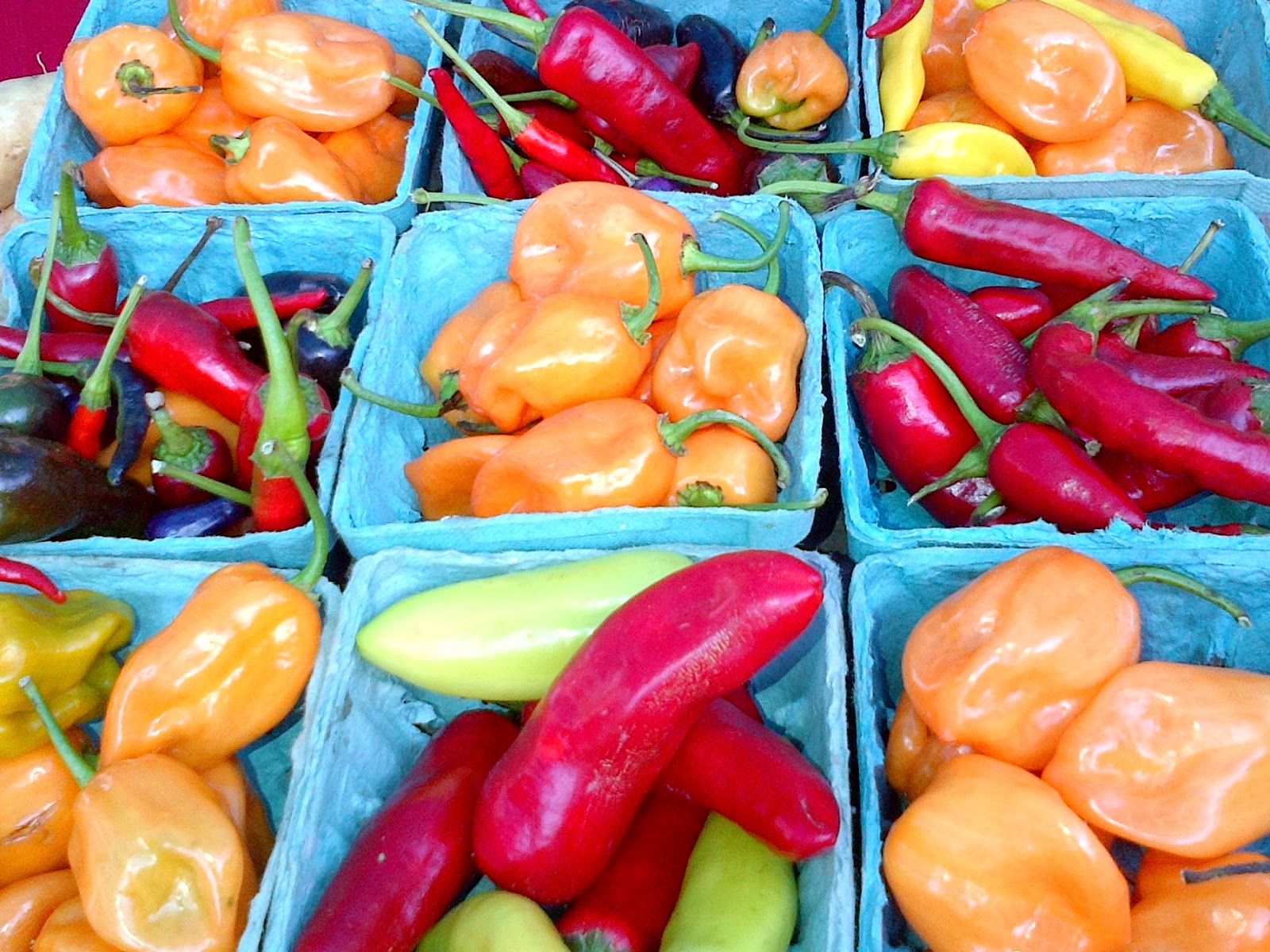The Air and Space Museum.
The Dupont Circle Farmers' Market.
Yes, it's a Produce Savant trip to Washington DC!
I hadn't been to DC for many years. On my last visit, I was so produce-starved I ended up buying a banana from an ice cream parlor. But things have changed since then.

I was delighted to find that farmers' markets have become popular and readily accessible since my last visit. When I asked the staff at our hotel about farmers' markets, I received some helpful and straightforward ideas, mercifully free of any good-thing-I'm-paid-to-deal-with-members-of-fringe-communities response.
But we found our first market serendipitously, while walking downtown. This market was held at the U.S. Department of Agriculture.
The USDA market offered a two-fer: vendors plus the opportunity to see produce growing in the surrounding gardens. The selection of farm stands was small, but offset by the friendly vibe and the extreme convenience of finding the market without going out of our way.
The market's modest size showcased the courtly manners of the vendors. These manners, coupled with the prominence of certain vegetables like lima beans and okra - while our markets in New York do have them, they occupy less actual and mental real estate - gave the market a semi-Southern vibe, not inappropriate for this semi-Southern city.
Would it be snarky to note that the USDA farm stand that attracted the longest lines featured King Corn? Yes, skip over the fairy eggplant, tomatoes and okra to get to the market's real attraction, kettle corn.
Of course, like all travelers, we had to keep it moving.
Our next destination was the Eastern Market, a public market in the Capitol Hill neighborhood that first opened in 1873 - about 20 years earlier than Philadelphia's wonderful Reading Terminal Market. Its 19th century building was gutted in a fire in 2007 but renovated and re-opened in 2009. My carnivorous friends were very impressed by the market's butcher stand. For us herbivores, the market was a little small. We were ready for some destination produce markets.
Next stop: the market at 14th and U Streets.
I enjoy exploring urban neighborhoods like U Street, which added to the fun. This market had a nice selection of farm stands.
Although the prices seemed a bit high by New York standards - more on this later - the vendors did have a more formal system of discounting small and bruised produce than is common in New York.
I have to admit my favorite vendor was not a farm stand but rather No 1 Sons, produce picklers. As a connoisseur not only of farmers' markets but also their signs, I was doubly wowed.
Our final market: the huge Dupont Circle farmers market.

This one is operated by FreshFarm, which also runs conveniently located markets in neighborhoods such as Foggy Bottom, Union Market, downtown Silver Spring (Maryland) and "by the White House."

FreshFarm restricts participation to "farmers/producers who sell what they grow, raise or produce on their own farm or facility." All farmers must hail from the Chesapeake Bay Watershed region, which by FreshFarm's reckoning includes a 200 mile radius of Washington DC and the states of Maryland, Delaware, Pennsylvania, West Virginia, and Virginia.
I enjoyed the extensive samples and some C-SPAN policy wonk celebrity sighting. I can't wait for the Us Magazine spread: "Celebrities are just like us - they shop at farmers' markets!" I'm just not sure that pundits count as celebrities.
I couldn't help but notice that the prices at the market - Dupont Circle especially - were steep, noticeably steeper than NYC's Union Square Greenmarket. I mentioned this to a FreshFarm staffer, and she responded matter-of-factly, "Oh, DC is much more expensive than New York in general."
Huh! This was news to me (and various chart-makers) - NYC's real estate costs are especially ridiculous - but we're happy to step aside.
Lest you think the Produce Savant is a philistine with limited interests, I should add that I did visit many of Washington's great museums. Here are some highlights from the National Gallery of Art!
·











